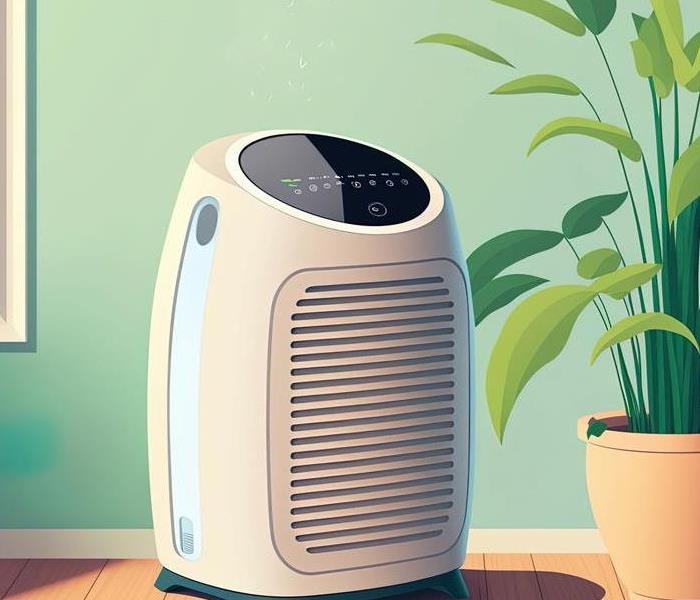The Role of Dehumidification in Mold Remediation
2/27/2023 (Permalink)
Mold is a serious problem that can cause health issues and damage your property. Fortunately, you can control the growth of mold and prevent it from spreading. One of these steps is dehumidification, which helps reduce humidity and moisture levels in an environment to control the growth of mold. In this article, we'll discuss the role of dehumidification in mold remediation and how it can help keep your home or business safe from mold.
What Is Dehumidification?
Dehumidification is an easy process of removing excess moisture from an indoor environment. This can be done through mechanical ventilation, air conditioning, or dehumidifiers. By reducing the humidity in the space, mold growth can be mitigated and even prevented.
How Does Dehumidification Help with Mold Remediation?
Moisture is a key factor that enables mold to form and flourish. Dehumidifiers can reduce the humidity, which can control the growth and spread of mold. It can also reduce the risk of future mold growth by reducing the number of spores in the air. A reduced spore count can help keep the area safe from future mold problems. The fewer spores in the air, the less likely they cause health problems such as allergies and asthma. Dehumidifiers can also help keep the air clean, reducing dust mites and other allergens known as triggers of allergies and asthma.
Dehumidification can reduce the visible signs of mold growth, such as discoloration on walls and ceilings. This can help speed up the remediation process as there will be less need to scrub off visible mold growth. Dehumidification aids in speeding up the drying process, which can help prevent mold growth and reduce the amount of time required for remediation.
If you're dealing with a mold issue, dehumidification can be a helpful tool in the remediation process.
What Other Steps Should Be Taken During Mold Remediation?
In addition to dehumidification, several other important steps should be taken during mold remediation. These steps include identifying the source of the mold, cleaning and sanitizing affected surfaces, and repairing any areas damaged by the mold.
Identify and Address the Source
The most important step in mold remediation is to identify and address the source of the problem. Often, this may involve finding and fixing a plumbing or water leak or finding and addressing any other factors contributing to mold growth.
Cleaning and Sanitizing Surfaces
Once the source of the mold has been addressed, it is important to clean and sanitize all affected surfaces. This should include any areas where the mold is growing and any surfaces that may have been exposed to the spores. It is important to use cleaning solutions specifically designed for mold removal and to follow all safety instructions when using them.
Fan and Venting
Using fans and ventilation systems can help reduce humidity in the space, which can help to inhibit mold growth. It is important to ensure that all fans and ventilation systems are kept in good working order. If any of the fans or systems are not working properly, this can increase the likelihood that mold will grow in the space.
Repair Damaged Areas
Finally, it is important to repair any areas damaged by the mold. This may include replacing drywall, insulation, or other materials compromised due to mold.
It is also important to take necessary precautions to prevent future mold growth. This can include things like making sure water sources are properly sealed and insulated, using air purifiers and dehumidifiers regularly, and ensuring that all areas of the home or business are properly ventilated.
If you're dealing with a mold issue, don't hesitate to contact the professionals at SERVPRO of South and Northwest Grand Rapids. Our experienced staff will help you through any mold remediation project. Call us at (616) 662-9700 with any questions, and our team will be there to help.




 24/7 Emergency Service
24/7 Emergency Service
